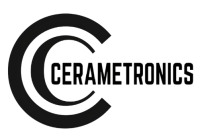Medical equipment and devices require materials that can withstand the harsh conditions of the human body while maintaining safe, accurate, and reliable operation. Ceramic substrates with their chemical resistance, biocompatibility, and dimensional stability have become an essential component in medical applications, providing a robust and reliable solution.
Metalized Ceramics for Improved Performance
Metalized ceramics, which are ceramic materials coated with a conductive metal layer, offer improved performance for medical applications. This metal layer provides a conductive surface that can be used to attach electronic components such as sensors and transducers. The most commonly used metals for metallization are silver, gold, platinum, and palladium.
The use of metalized ceramics in medical applications provides several benefits. First, these materials offer excellent chemical resistance, ensuring safe operation even in harsh chemical environments. Second, metalized ceramics have excellent biocompatibility, making them safe to use in medical devices that come into contact with the human body. Finally, the dimensional stability of metalized ceramics ensures precise and stable operation over a long period of time.
Ceramic Substrates for Thermal Management
Ceramic substrates are also essential components in medical devices, providing a thermally conductive and mechanically stable base for the electronic components. Ceramic substrates with metalized layers offer excellent thermal conductivity and mechanical strength, allowing for high power density designs. Additionally, ceramic substrates are highly reliable, with excellent resistance to thermal and mechanical stress.
In medical devices, thermal management is critical for safe and reliable operation. Ceramic substrates with their high thermal conductivity provide a robust solution for heat dissipation, allowing for efficient and reliable operation even in high-temperature environments.
Applications of Ceramic Substrates in Medical Devices
Ceramic substrates are used in various medical devices, including diagnostic equipment, patient monitoring devices, and implantable devices. In diagnostic equipment, ceramic substrates are used in sensors and transducers to measure various physiological parameters, such as blood pressure, temperature, and oxygen saturation.
In patient monitoring devices, ceramic substrates are used to provide a stable and reliable platform for electronic components such as microcontrollers, sensors, and wireless communication modules. These devices enable healthcare professionals to monitor patients’ vital signs remotely and provide timely interventions when necessary.
Implantable medical devices, such as pacemakers, cochlear implants, and neural stimulators, also use ceramic substrates. Ceramic substrates with their excellent biocompatibility and dimensional stability offer a safe and reliable solution for these life-saving devices.
Ceramic substrates with their chemical resistance, biocompatibility, and dimensional stability have become an essential component in medical applications, providing a robust and reliable solution for safe and accurate operation. The use of metalized ceramics and ceramic substrates in medical devices ensures improved performance and thermal management, enabling the development of more advanced and efficient medical devices.

